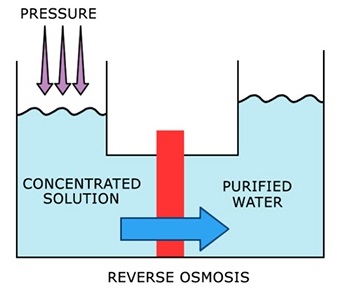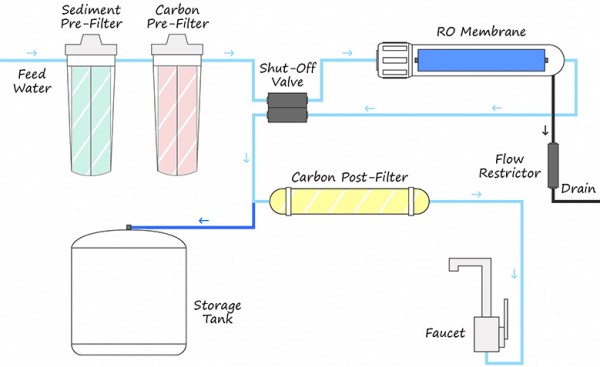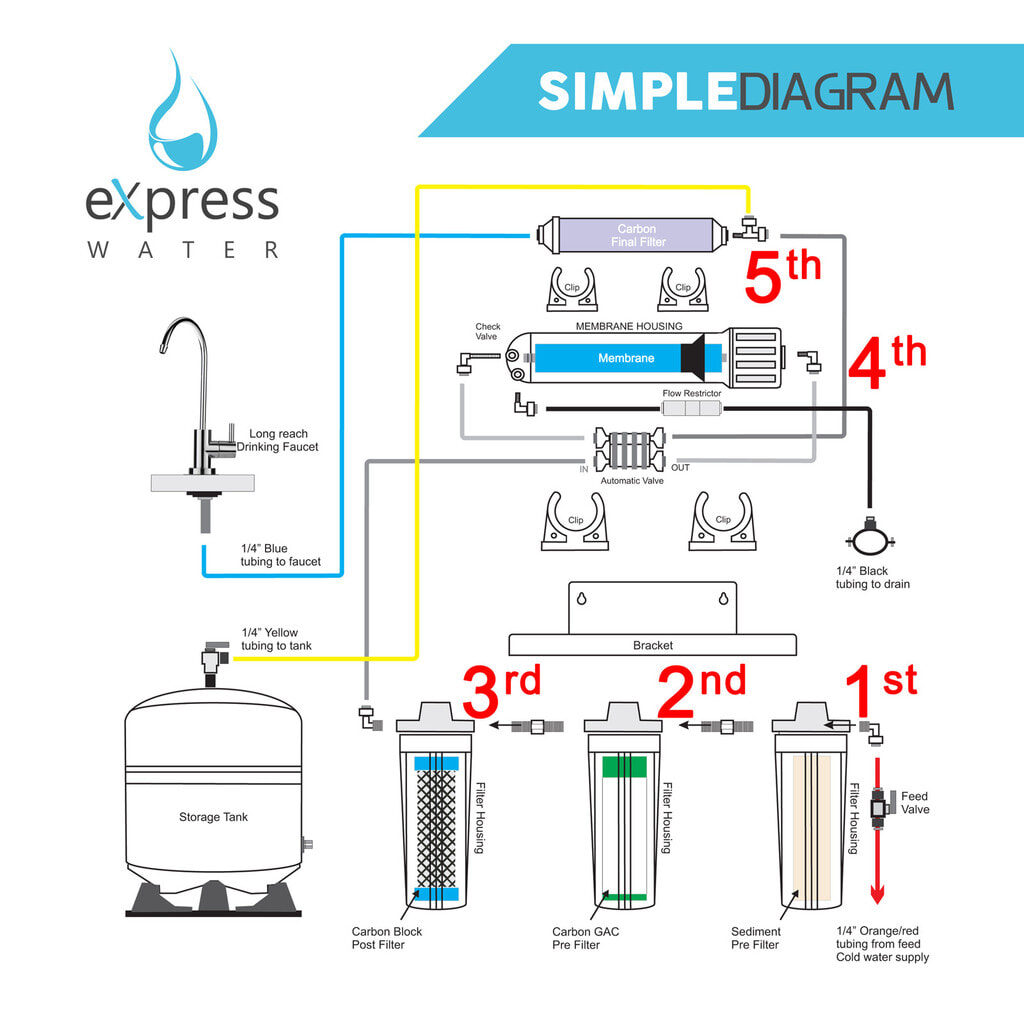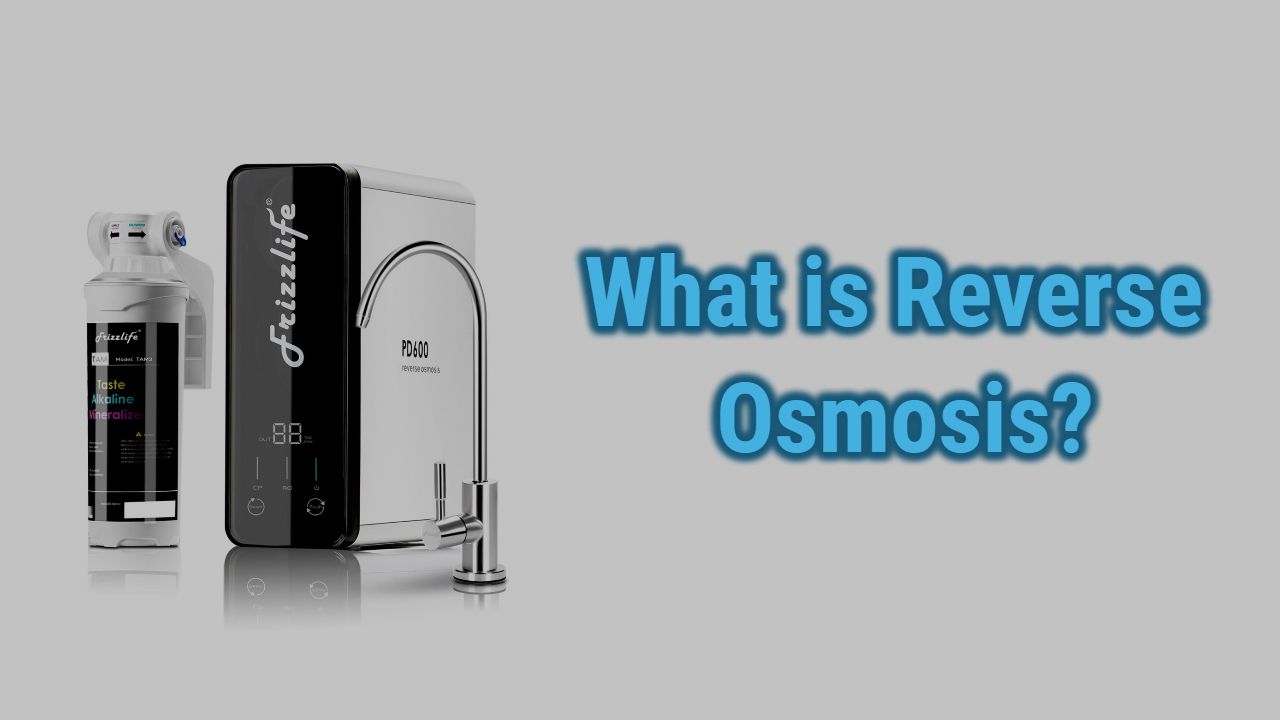I know it can be a mind-boggling task while deciding which filter or water purification to install in your household. Today, there are many options available in the market, but getting the proper water system is what everyone desires.
Each and every water system is different and requires a different setup. Be it any system, type of water is the main criteria for deciding the actual water filter system.
Similarly, in this article, we will be discussing the Reverse Osmosis water filter system (Henceforth referred to as RO). RO is the physical method of purifying water. RO systems consist of multiple additional filters installed with them. It is one of the most common water filter systems used worldwide. So let’s dive into this topic for better understanding.
Table of Contents
WHAT IS REVERSE OSMOSIS (RO)?

In simple terms, RO uses a pressure mechanism to filter water. High pressure is used to force the water from highly contaminated water to low contaminated water through a semipermeable membrane.
This membrane is also called RO membrane. After passing the semipermeable membrane, wastewater comes out through an outlet pipe, and the purified water goes into the water storage tank located with the RO system.
Remember that purified water also passes through other additional filters like a carbon filter, sediment filter, etc., before finally reaching the water storage tank. From here, the water is taken and used for drinking, cooking, and other purposes. RO helps in maintaining a good water taste and quality.
We also wanted our readers to know that there is a lot of misinformation or myth regarding RO systems. It is said that RO wastes a lot of water; the membrane has to be changed now and then, which is absolutely wrong. Yes, it is true that unfiltered water is discharged in RO, but that water can be used for some other purposes too.
And there is no need to frequently change the membrane, and it is recommended you change your membrane every 6 months, which is okay considering the time.
Stages involved in the RO filtering process

1st is the pre-filtration stage of water (before the water reaches the RO membrane, it can also pass through other additional filters, which are being mentioned time and again in this article). This stage is where water passes with force towards the RO membrane. RO membrane further passes the filtered water ahead.
2nd is the reverse osmosis (RO) filtering process stage, where water passes through this membrane, blocking contaminants and passing clean water further ahead. This clean water can further be put to go further into filters such as sediment, carbon, or UV filters.
3rd is wastewater discharge(Drainage) and water storage stage; after the water is filtered from one pipe, wastewater is discharged, and from another pipe, and then filtered water is stored in the water tank. RO is considered as a healthy water filter system, where water is purified nicely. RO removes contaminants, dissolved solids, and other harmful materials. And finally, after the water is totally filtered, it is kept in a water tank located within the RO system. RO water is very effective in doing what it exactly does.
So it is clear that the RO membrane plays a very crucial role in removing contaminants and forcing water to another level of filtration. Then the water goes through more levels of filtration, making the water crisp and drinkable.
Note – Other filtration parts are also used, such as Carbon Filter, Sediment Filter, Ultra Violet filter, etc. If these extra filters are put, then the filtration process will go through all these filters, making the water more clean and devoid of any contaminants. So these filters totally depend on the individual choice to install them.
HOW DOES A RO WORK?

RO works similar to other filters. It is one of the easiest ways a filtration system functions. Since RO works on the osmosis technique, it requires an external force pressure to work. This pressure is now applied to solve water, which makes the water pass through the RO membrane to a filtered solution.
The water is specifically passed through this membrane, which filters out harmful contaminants from water and then passes it through another filter like carbon filter and UV filter.
What RO does is keeps high concentrated water that is dirty on one side and filters clean water on the other. The unfiltered part of the water is then drained out from an outlet pipe. The major downside of water is that it leaves a lot of wastage water.
ADVANTAGES OF REVERSE OSMOSIS (RO)
- It is a simple yet very effective water filter system
- Removes salts, colloids, particles, and bacteria
- It requires minimum setup
- Removes unwanted dissolved solids, harmful elements, up to 99%
- Drinking RO water can minimize health risk like high blood pressure, skin issues, etc
- Not much expensive
- Generally has a long lifespan, if maintained well
- Product warranty from the manufacturer
- Provides healthy water which is fit for drinking, cooking, washing, etc
DISADVANTAGES OF REVERSE OSMOSIS (RO)
- Needs high maintenance to keep the RO working
- Wastes a lot of water
- Additional filter requirement for better water results can become expensive
- Regular maintenance, parts change, etc
- Requires electricity to work
- Doesn’t remove all the contaminants
- Water rates are slower than expected
Conclusion
RO is very common in households. You are sure to find 9 households with RO systems installed out of 10. This is the success rate of RO systems. This is mainly because it does enough to remove contaminants, and it is less expensive and easy to set up.
Also, one very important point for RO getting popularity is because along with RO, additional filters can also be installed for even better water. For example, Sediment filter, Carbon filter, etc.
However, RO does have some drawbacks like water wastage and regular maintenance, but that is not a major problem and can be dealt with quite the ease. RO is a proven technology for delivering water quality, used by industries, companies, and households.
So, if you are planning to get RO installed on your premises, you can go ahead without any doubt. There is nothing better than a RO, especially for household purposes.
Hope you got to learn all about how Reverse Osmosis filters work and their advantages and disadvantages. And moreover, it is always advised to get technical help while choosing your filter systems.
Related Article:
Reverse Osmosis System Vs Water Softener
